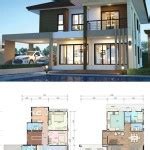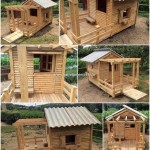A Tudor house plan refers to a blueprint or design for a house inspired by the architectural style prevalent during the Tudor period in England (1485-1603). These plans provide a detailed layout for constructing a residence that embodies the characteristic features of Tudor architecture.
Tudor house plans are commonly sought after by individuals seeking to build homes with a sense of historical charm and architectural significance. They offer a unique blend of medieval and Renaissance influences, with notable features such as steeply pitched roofs, decorative gables, and mullioned windows. One renowned example of a Tudor house is Anne Hathaway’s Cottage in Stratford-upon-Avon, which serves as a testament to the enduring appeal of this architectural style.
In the following sections, we will explore the key elements of a Tudor house plan, discussing its characteristic features, common variations, and the considerations involved in designing and building a Tudor-style home.
Key Points about Tudor House Plans:
- Steeply pitched roofs
- Decorative gables
- Mullioned windows
- Asymmetrical facades
- Half-timbering
- Arched doorways
- Oriel windows
- Grand fireplaces
- Elaborate chimneys
- Leaded glass
Tudor house plans offer a unique blend of medieval and Renaissance architectural influences, creating homes with historical charm and architectural significance.
Steeply pitched roofs
Steeply pitched roofs are a defining characteristic of Tudor house plans. These roofs serve several important functions beyond their aesthetic appeal:
Protection from the elements: The steep pitch of the roof allows water to shed quickly and efficiently, preventing damage to the structure from rain, snow, and ice. This is particularly important in regions with heavy rainfall or snowfall.
Ventilation: The steep pitch also promotes ventilation by creating a natural airflow within the attic space. This helps to prevent moisture buildup and ensures that the home remains dry and comfortable.
Structural support: The heavy timber framing used in Tudor roofs provides excellent structural support, allowing for large, open rooms and expansive windows without compromising the integrity of the building.
Architectural interest: The steeply pitched roofs, often adorned with decorative gables and chimneys, create a visually striking and distinctive appearance that is synonymous with Tudor architecture.
Decorative gables
Decorative gables are a prominent feature of Tudor house plans, adding visual interest and architectural character to the exterior of the home. These gables extend above the roofline, often featuring intricate designs and embellishments that reflect the craftsmanship and artistry of the Tudor period.
The most common type of decorative gable in Tudor architecture is the crow-stepped gable. This gable features a series of stepped sections, resembling the steps of a staircase. Crow-stepped gables are often found on the ends of buildings or above dormer windows.
Another popular type of decorative gable is the shaped gable. Shaped gables have curved or pointed outlines, creating a more elaborate and ornate appearance. These gables may be adorned with decorative finials or other architectural details.
In addition to their aesthetic appeal, decorative gables also serve a practical purpose. They help to shed water away from the walls of the building, protecting the structure from moisture damage. The stepped or shaped design of the gables allows water to flow easily over the surface and down the sides of the building.
Overall, decorative gables are an integral part of Tudor house plans, contributing to the unique and charming appearance of these historic homes.
Mullioned windows
Mullioned windows are a distinctive feature of Tudor house plans, contributing to the home’s historical charm and architectural character. These windows are divided into multiple panes by vertical mullions, creating a grid-like pattern that adds visual interest and structural support.
Mullions are typically made of wood or stone and can vary in thickness and design. They serve several important functions in a Tudor house plan:
- Structural support: Mullions provide additional support to the window frame, allowing for larger windows without compromising their structural integrity. This is especially important in the grand, expansive windows that are often featured in Tudor homes.
- Natural light: The multiple panes of glass in mullioned windows allow for ample natural light to enter the home. This helps to create bright and airy interiors that are both comfortable and inviting.
- Ventilation: Mullioned windows can be opened independently, providing flexibility in controlling airflow and ventilation. This is particularly beneficial in the summer months when cross-ventilation can help to cool the home.
- Energy efficiency: Mullioned windows, when properly sealed, can help to improve the energy efficiency of the home. The multiple panes of glass and the air space between them act as an insulating barrier, reducing heat loss during the winter and heat gain during the summer.
In addition to their practical benefits, mullioned windows also add a touch of elegance and sophistication to a Tudor house plan. The grid-like pattern creates a visually appealing and distinctive aesthetic that is synonymous with the Tudor period.
Overall, mullioned windows are an essential element of Tudor house plans, combining functionality, architectural character, and historical charm.
Asymmetrical facades
Asymmetrical facades are a defining characteristic of Tudor house plans, contributing to their unique and visually striking appearance. Unlike symmetrical facades, which feature a balanced and mirrored arrangement of architectural elements, asymmetrical facades embrace irregularity and asymmetry to create a sense of visual interest and dynamism.
- Varied rooflines: Tudor house plans often incorporate multiple rooflines of varying heights and pitches. This asymmetry creates a visually dynamic and complex roofscape that adds character and interest to the exterior of the home.
- Off-center entrances: The main entrance to a Tudor home is often placed off-center, creating an asymmetrical focal point that draws the eye and adds visual interest. This off-center placement can also be used to create a sense of privacy and seclusion.
- Unbalanced windows: Tudor house plans frequently feature windows of different sizes and shapes arranged in an asymmetrical pattern. This irregularity adds visual interest and helps to create a sense of organic growth and evolution in the design.
- Projecting wings: Many Tudor house plans incorporate projecting wings or extensions that add depth and dimension to the facade. These wings can be used to create additional living space, bay windows, or other architectural features that enhance the overall asymmetry of the home.
Overall, asymmetrical facades are a key element of Tudor house plans, creating a sense of visual interest, dynamism, and architectural character that is synonymous with the Tudor period.
Half-timbering
Half-timbering is a distinctive architectural technique commonly employed in Tudor house plans. It involves the use of exposed timber framing to create a decorative and structural framework for the exterior walls of the building.
The timber frame is typically constructed using large, square-cut beams of oak or other durable wood. These beams are joined together using mortise and tenon joints, creating a sturdy and long-lasting structure. The spaces between the timber beams are then filled with a variety of materials, such as wattle and daub, brick, or stone.
Half-timbering serves several important functions in a Tudor house plan:
- Structural support: The exposed timber frame provides structural support for the building, helping to distribute the weight of the roof and walls evenly. This allows for the creation of large, open spaces within the home without compromising its structural integrity.
- Decorative element: The exposed timber frame also serves as a decorative element, adding visual interest and character to the exterior of the home. The intricate patterns and textures created by the beams add a sense of depth and craftsmanship to the facade.
- Energy efficiency: The air pockets created between the timber beams and the infill material provide insulation, helping to regulate the temperature within the home. This can contribute to improved energy efficiency and reduced heating and cooling costs.
Half-timbering is a defining characteristic of Tudor house plans, contributing to their unique and charming appearance. It combines functionality, durability, and aesthetic appeal, making it a popular choice for those seeking to build a home with historical character and architectural significance.
Types of half-timbering
There are several different types of half-timbering used in Tudor house plans, each with its own unique appearance and characteristics:
- Close studding: This type of half-timbering features closely spaced vertical timbers, creating a dense and decorative pattern. The infill material is typically wattle and daub or brick.
- Wide studding: This type of half-timbering uses wider spaced vertical timbers, with larger panels of infill material. The infill material can be wattle and daub, brick, or stone.
- Square paneling: This type of half-timbering creates a grid-like pattern of square or rectangular panels. The infill material is typically brick or stone.
- Decorative carving: Some Tudor house plans incorporate decorative carving into the timber framing, adding an extra layer of visual interest and craftsmanship.
The choice of half-timbering style depends on the desired aesthetic and the specific design of the Tudor house plan.
Arched doorways
Arched doorways are a distinctive feature of Tudor house plans, adding a touch of elegance and architectural character to the home’s interior and exterior. These doorways are characterized by their curved shape, which can vary from a gentle arc to a more pronounced ogee curve.
Arched doorways serve several important functions in a Tudor house plan:
- Structural support: The arched shape of the doorway helps to distribute the weight of the wall above it more evenly, reducing the need for additional structural support. This allows for the creation of wider doorways without compromising the integrity of the building.
- Aesthetic appeal: Arched doorways add visual interest and a sense of grandeur to a Tudor home. The curved shape creates a more inviting and welcoming atmosphere, drawing the eye and enhancing the overall architectural aesthetic.
- Historical accuracy: Arched doorways are a hallmark of Tudor architecture and help to create an authentic and historically accurate representation of the period. They reflect the craftsmanship and attention to detail that was characteristic of Tudor builders.
- Improved acoustics: The curved shape of an arched doorway can help to improve the acoustics within a room by reducing echoes and reverberation. This can create a more comfortable and enjoyable environment for conversation and other activities.
Overall, arched doorways are an integral part of Tudor house plans, combining functionality, aesthetic appeal, historical accuracy, and improved acoustics to create a unique and charming living space.
Oriel windows
Oriel windows are a distinctive feature of Tudor house plans, adding an element of architectural elegance and practical functionality to the home.
- Projecting design: Oriel windows project outward from the facade of the building, creating a small, enclosed space that is supported by corbels or brackets. This design allows for increased natural light and ventilation, as well as providing panoramic views of the surrounding landscape.
- Bay window variation: Oriel windows are a type of bay window, but they are distinguished by their polygonal or rectangular shape and their projection from a single wall plane. Bay windows, on the other hand, can have multiple sides and project from a corner of the building.
- Increased natural light: The projecting design of oriel windows allows for maximum natural light to enter the room. This can create a brighter and more inviting space, reducing the need for artificial lighting during the day.
- Improved ventilation: Oriel windows can be opened to provide cross-ventilation, which helps to circulate air and keep the home cool and comfortable during the summer months.
Overall, oriel windows are a beautiful and functional addition to any Tudor house plan. They provide increased natural light, improved ventilation, and stunning views, while also adding a touch of architectural character and historical charm.
Grand fireplaces
Grand fireplaces are a defining feature of Tudor house plans, serving both practical and aesthetic purposes. These fireplaces are typically large and elaborately designed, often becoming the focal point of the main living spaces within the home.
- Central heating: In Tudor times, fireplaces were the primary source of heat for homes. Grand fireplaces were particularly effective at heating large rooms, as they could radiate heat over a wide area. The large size of the fireplaces also allowed for the burning of substantial logs, providing a sustained source of warmth.
- Cooking: In addition to heating, grand fireplaces were also used for cooking. The large hearth provided ample space for cooking pots and pans, and the open flames allowed for efficient and versatile cooking. Tudor kitchens were often centered around the fireplace, which served as the primary cooking appliance.
- Social gathering: The fireplace was a central gathering place for families and guests in Tudor homes. People would often sit around the fire to socialize, tell stories, and enjoy each other’s company. The large size of grand fireplaces allowed for comfortable seating arrangements, making them ideal for social gatherings.
- Architectural statement: Grand fireplaces were not only functional but also decorative elements within Tudor homes. They were often adorned with intricate carvings, moldings, and other embellishments that reflected the wealth and status of the homeowner. The fireplace mantelpiece was a particularly prominent feature, often serving as a display area for valuable objects or family heirlooms.
Overall, grand fireplaces were essential elements of Tudor house plans, providing warmth, comfort, and a central gathering place for the occupants. They also served as architectural statements, reflecting the craftsmanship and artistry of the Tudor period.
Elaborate chimneys
Elaborate chimneys are another distinctive feature of Tudor house plans. These chimneys were not merely functional structures but also served as decorative elements that added visual interest and architectural character to the home’s exterior.
- Ornamental designs: Tudor chimneys were often adorned with intricate carvings, moldings, and other decorative elements. These embellishments could include geometric patterns, floral motifs, or even figures of people and animals. The chimney caps were particularly elaborate, featuring a variety of shapes and designs, including octagonal, square, or fluted caps.
- Multiple flues: Tudor chimneys typically had multiple flues, each serving a different fireplace or heating appliance within the home. This allowed for efficient heating of various rooms and spaces, ensuring comfort and warmth throughout the house.
- Tall and prominent: Tudor chimneys were often tall and prominent, rising high above the roofline. This height helped to improve the draw of the fireplace and ensure proper ventilation for the heating system. The chimneys also served as landmarks, providing a distinctive silhouette that could be seen from afar.
- Symbol of status: Elaborate chimneys were a symbol of wealth and status in Tudor society. The size, ornamentation, and craftsmanship of the chimney reflected the homeowner’s social standing and financial means. Grand chimneys were often commissioned by noble families and wealthy merchants as a display of their affluence.
Overall, elaborate chimneys were an integral part of Tudor house plans, combining functionality, decorative appeal, and symbolic significance to create a unique and visually striking architectural feature.
Leaded glass
Leaded glass is a distinctive feature of Tudor house plans, adding a touch of elegance, privacy, and historical charm to the home’s windows and other glazed openings.
- Decorative patterns: Leaded glass windows are created by joining small pieces of glass together using lead came, a thin strip of lead. This technique allows for the creation of intricate patterns and designs, ranging from simple geometric shapes to elaborate pictorial scenes. The lead came itself can also be shaped and decorated, adding further visual interest to the windows.
- Privacy and light control: Leaded glass windows provide a degree of privacy while still allowing natural light to enter the home. The small panes of glass and the lead came between them obscure the view from outside, making it difficult to see clearly into the interior of the home. At the same time, the translucent nature of the glass allows light to pass through, creating a bright and airy atmosphere inside.
- Historical accuracy: Leaded glass windows are an authentic feature of Tudor architecture. They were commonly used in both grand manor houses and more modest homes during the Tudor period. Incorporating leaded glass windows into a Tudor house plan helps to create a historically accurate representation of the era.
- Energy efficiency: Modern leaded glass windows are designed to be energy efficient, featuring double or triple glazing to reduce heat loss and improve insulation. This helps to maintain a comfortable indoor temperature year-round, reducing heating and cooling costs.
Overall, leaded glass is a beautiful and functional addition to Tudor house plans, providing decorative appeal, privacy, historical accuracy, and energy efficiency to the home’s windows and glazed openings.










Related Posts








